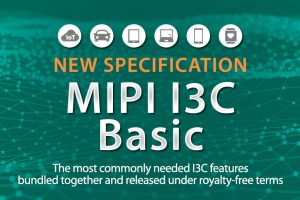
MIPI Alliance releases interface spec for widespread implementation in mobile
EP&T Magazine
Electronics Regulations & Standards IoT MIPI I3C spec MIPI I3C specReleased under royalty-free terms, MIPI I3C Basic provides a streamlined upgrade path from the ubiquitous I2C, with the most commonly needed developer capabilities for smartphones, IoT devices, connected vehicles and more
The MIPI Alliance, an international organization that develops interface specifications for mobile and mobile-influenced industries, released MIPI I3CBasic v1.0, a subset of the MIPI I3C specification that bundles the most commonly needed I3C features for developers and other standards organizations. 
Released in January 2017, MIPI I3C v1.0 streamlines and advances interface technologies for connecting processors, sensors and many other devices that had previously used I2C (Inter-Integrated Circuit), the de facto standard for over 35 years. MIPI I3C Basic v1.0 provides 20 key features from MIPI I3C, including:
- Backward compatibility with I2C
- A multi-drop bus that, at 12.5 MHz, is over 12 times faster than I2C supports while using significantly less power
- In-band interrupts to allow slaves to notify masters of interrupts, a design that eliminates the need for a separate general-purpose input/output (GPIO) for each slave and thus reduces system cost and complexity
- Dynamic address assignment to avoid conflicting static addresses, providing flexibility and pin savings
- Standardized discovery, and bus configuration and control
- Uses standard low-cost pads and requires minimal cost in logic to support
“We have seen tremendous interest in I3C from the mobile ecosystem. Now, with I3C Basic, the broader developer community can immediately and efficiently begin using these capabilities as an alternative to I2C,” said Joel Huloux, chairman of MIPI Alliance. ”In addition, we are already working with several standards organizations to integrate I3C Basic into their specifications. We believe it provides tremendous value to mobile and many other industries in multiple ways. For example, as the IoT market expands, it will serve a growing need to transfer data collected from a wide range of mechanical, environmental, biometric and health sensors.”
